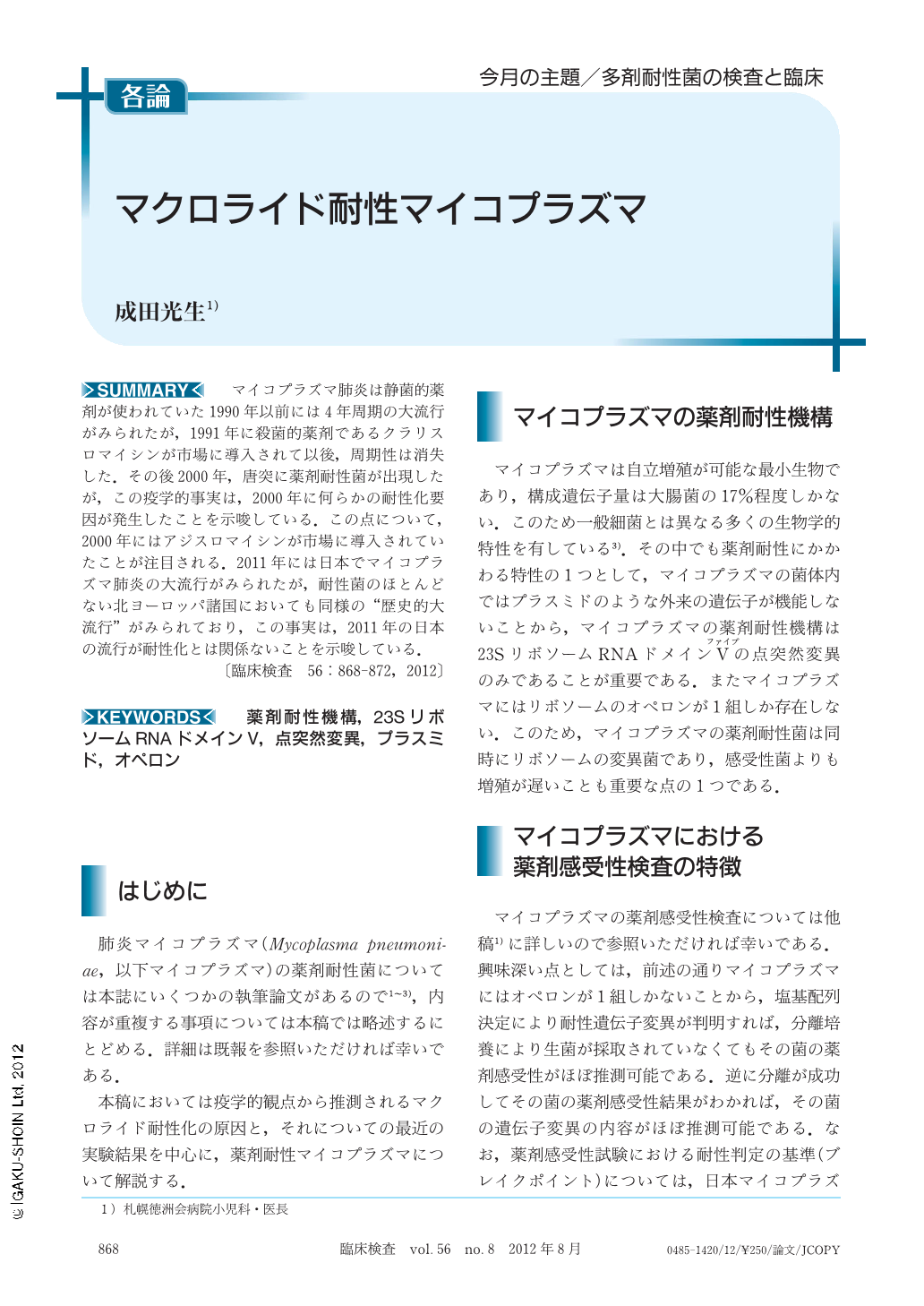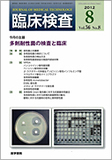Japanese
English
- 有料閲覧
- Abstract 文献概要
- 1ページ目 Look Inside
- 参考文献 Reference
- サイト内被引用 Cited by
マイコプラズマ肺炎は静菌的薬剤が使われていた1990年以前には4年周期の大流行がみられたが,1991年に殺菌的薬剤であるクラリスロマイシンが市場に導入されて以後,周期性は消失した.その後2000年,唐突に薬剤耐性菌が出現したが,この疫学的事実は,2000年に何らかの耐性化要因が発生したことを示唆している.この点について,2000年にはアジスロマイシンが市場に導入されていたことが注目される.2011年には日本でマイコプラズマ肺炎の大流行がみられたが,耐性菌のほとんどない北ヨーロッパ諸国においても同様の“歴史的大流行”がみられており,この事実は,2011年の日本の流行が耐性化とは関係ないことを示唆している.
Epidemics of Mycoplasma pneumoniae pneumonia had been seen at 4-year intervals before 1990 during which time bacteriostatic antibiotics were used. Since 1991, when the bactericidal antibiotic clarithromycin was introduced into clinical practice, large epidemics gradually subsided. However, since 2000, when the first clinical strain of drug-resistant Mycoplasma pneumoniae was isolated, annual occurrence of Mycoplasma pneumoniae pneumonia has been increasing up to the present time. These epidemiologic observations strongly suggest that a certain causative event that increased resistance must have occurred in 2000, which subsequently has become widespread year by year. On this point, it is of note that azithromycin was introduced into clinical practice in 2000.

Copyright © 2012, Igaku-Shoin Ltd. All rights reserved.


